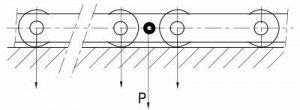• Place a fluid between the surfaces subject to friction (figure opposite):
pin/bush, pin/plate, bush/roller, plate/plate or roller, etc.
With a view to reducing their wear and avoid seizing.
• Protect the chain against corrosion
• Dampen the noise by intervening between the surfaces subject to impacts
• Remove the calories generated by the friction.
Chain technique – Conveyor chain
Lubrication
Purposes
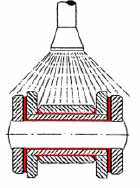
Type of application
The type of application depends on the application. The different types of application for conveyor chains can be classified in 2 categories:
MANUAL LUBRICATION
(brush, oilcan, etc.)
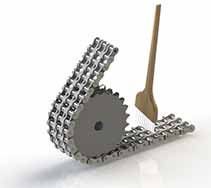
DRIPPER LUBRICATION
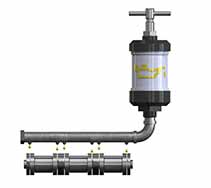
These two types are often used, but automatic systems with wiper brushes, spraying or splashing are also possible.
Application frequency
The application frequency and rate must be established with the lubricant or lubricant system suppliers.
Where to lubricate?
► Longitudinally: in a zone where the articulations are subject to low loading, in order to facilitate lubricant penetration (a & b: recommended zones)
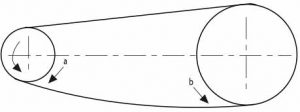
► Transversally: between the plates to feed lubricant into the articulations and between the inner plates and the rollers.
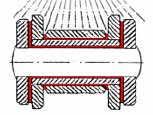
Which lubricant should you use?
The lubricant must be suited to the operating conditions. In most cases, you should use a mineral oil whose viscosity must be chosen according to the operating temperature:
Viscosity according to the operating temperature
| Operating temperature (°C) | Recommended viscosity grade (ISO -VG) |
| -15 to 0 °C | 15 to 32 |
| 0 to 50°C | 46 to 150 |
| 50 to 80°C | 220 to 320 |
The user must find a trade-off between too low a viscosity, which would facilitate evacuation of the lubricant by gravity or centrifugal force, and too high a viscosity, which would prevent the lubricant from reaching the surfaces subject to friction. You can orient your choice by consulting the mechanical chain lubrication guidelines published by CETIM.
For all special cases, in particular when lubrication is not possible, consult us.
Unless we recommend otherwise, the use of grease is absolutely prohibited.
• On consecutive links:
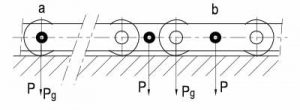
• On an isolated link:
